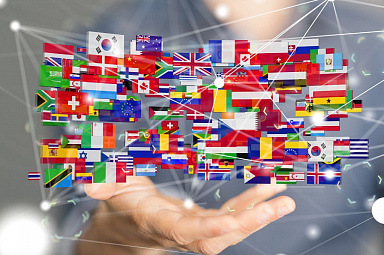Going through the Nuances of Translation and Localization
Going through the Nuances of Translation and Localization
Blog Article
Within our increasingly interconnected world, where businesses transcend borders and people communicate across diverse cultures, the importance of effective language services can't be overstated. Two key pillars in this realm are localization translation. Since they may appear synonymous at first glance, they serve distinct purposes and play pivotal roles in wearing down language barriers and fostering global communication.
Translation: Bridging Linguistic Gaps
At its core, translation is the process of rendering text or speech in one language into another while preserving its meaning. This fundamental service lets people to access information, literature, and concepts across linguistic boundaries. Translators, built with linguistic proficiency and cultural understanding, strive to maintain accuracy, coherence, and faithfulness towards the source material.
The ability of translation extends beyond mere linguistic substitution; it calls for a delicate dance between words and context. Idioms, cultural references, and nuances has to be carefully navigated to be sure the translated text captures the intended message. Whether it's literature, legal documents, technical manuals, or ads, translation may serve as the conduit for global communication, enabling individuals to share ideas and data.
Localization: Adapting to Cultural Contexts
While translation lays the foundation for cross-cultural communication, localization takes it a stride further by tailoring prepared to suit the cultural and linguistic nuances of a specific target audience. Localization is not just about language; it involves a comprehensive adaptation that considers regional variants aesthetics, design, formatting, as well as currency and units of measurement.
In essence, localization ensures that a message resonates with the local audience like it were originally made for them. For example, a marketing campaign that employs humor depending on cultural references should be reimagined to elicit the same response in the different culture. Computer programs, websites, and multimedia content often undergo localization to supply a seamless user experience that feels indigenous to diverse audiences.
Translation and Localization: A Symbiotic Relationship
While translation and localization serve distinct purposes, they frequently work hand in hand to achieve effective cross-cultural communication. Translation works as the foundation, wearing down language barriers and making content accessible across borders. Once the content is translated, localization procedures in to ensure that it not just makes sense linguistically but also aligns with all the cultural context from the target audience.
Consider a multinational company launching something new globally. The merchandise manuals may first undergo translation to make them accessible in different languages. However, for your product to achieve each market, further localization is necessary. This could involve adapting the ads, packaging, as well as the product itself to meet the unique preferences and expectations of customers in each region.
To conclude, translation and localization are integral components of effective global communication. While translation targets linguistic accuracy, localization delves deeper, comprising cultural subtleties and context. Together, these services enable businesses and individuals to bridge linguistic and cultural gaps, fostering a far more connected and inclusive world.